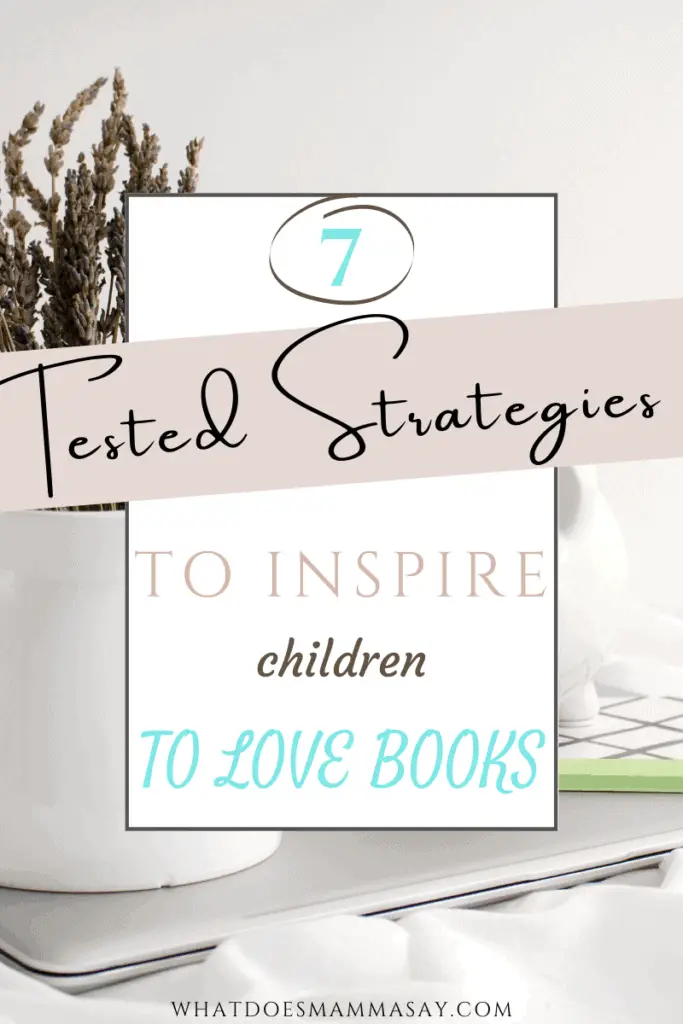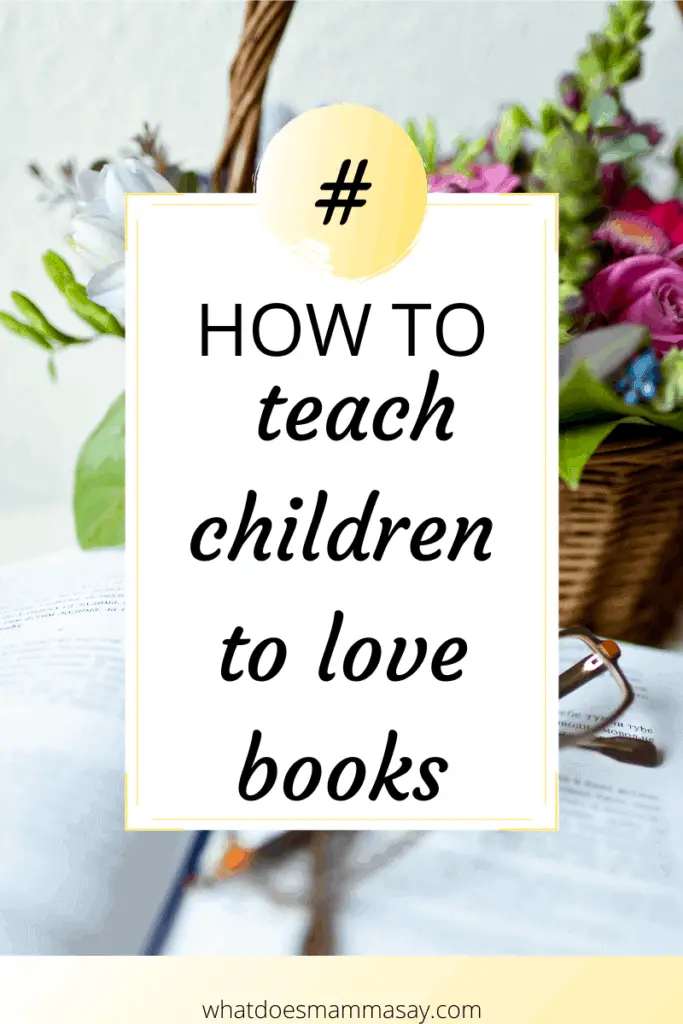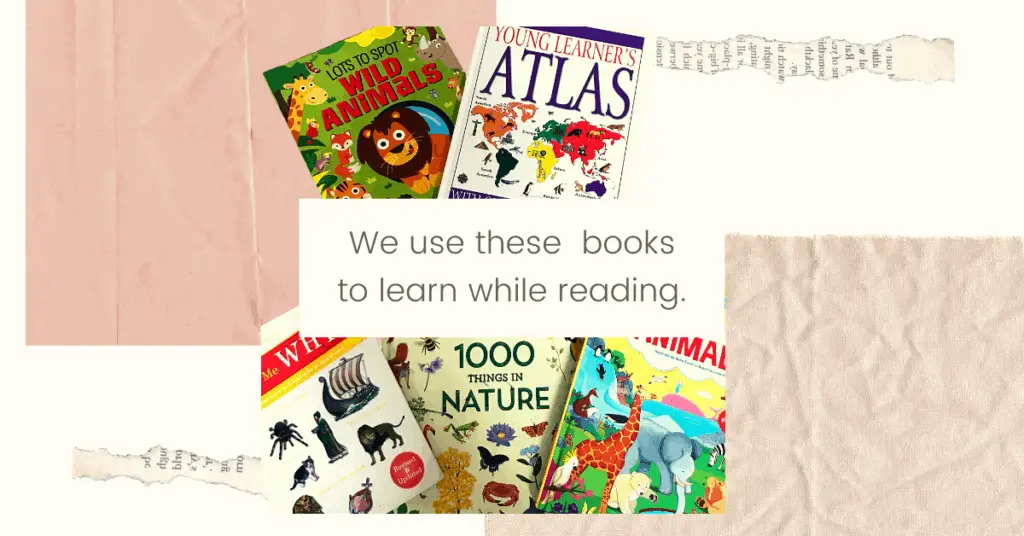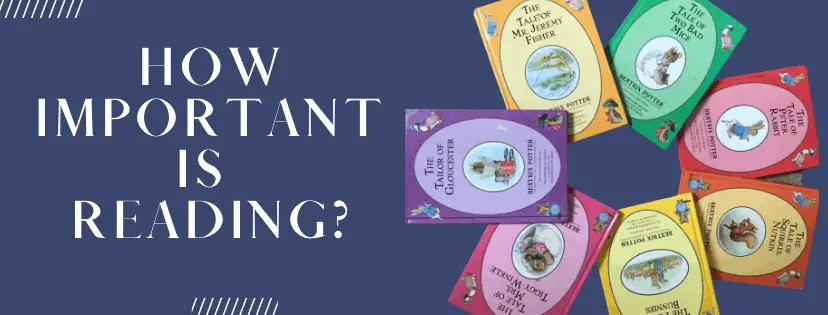“I can read with my eyes shut 1“, and no “I’m not mad bonkers, completely off my head2”. No, “here’s my secret, a very simple secret: it is only with the heart that one can see rightly3”. “But this is my idea. And it’s ok if it’s different, and weird and maybe a little crazy4”. But give it a try and remember: “believing takes practice5”.
If you’ve recognised all of the quotes above, then you’re a reading junkie just like me. Because you and I love books, we recognise the true importance of reading. And how magical books are! But above all, how helpful they are anywhere and anytime!
Here is a short overview of the main strategies to make your child love books
I would love to introduce my toddler to the mesmerising universe of books. Help him imagine tropical rainforests, fly over towering skyscrapers, meet bellowing dragons, or land on the peaceful moon.
It is not an easy task though! But I know how important it is for children to love reading. That is why I put together a list of tested ideas to teach you how to make your child love books.
Why is reading important?
It is absolutely essential that parents read to their children from an early age. Children are strongly programmed for communication. Because of the plasticity of the young human brain, children have an immense potential for learning.
Reading books is associated with an increased vocabulary in children. Several papers in the education literature underline the positive association between parents reading to their child and the child’s reading skills, but also his overall language skills and cognitive development.
I was amazed to discover that the influence of reading books to children can become apparent at around 36 months, incredible!
Can reading benefit every child?
A child’s cognitive skills are not fixed, which is excellent news!

Through practice and investment from parents and educators, a child’s brain development can be influenced. Seems logical, right?
Well, research shows that children are greatly impacted by their immediate environments. Implicitly interactions with their parents.
In other words, parents take on the role of their child’s first reading or literacy teacher.
Sounds a bit daunting, isn’t it? It shouldn’t be if you are doing things right. Let me tell you some of the secrets behind becoming a great reading teacher for your child.
I am a teacher and I’ve tried and tested all of these strategies with my son. He is now 2 years and 9 months and can speak two languages fluently. Amazing, I know! Let me take you through the best strategies that worked for us.
But first, click on the form below and get instant access to my ultimate reading checklist. And as a thank you, I am also offering you an amazing hands-on activity to help your child love reading.
7 Essential Strategies to Make Children Love Books
In their first year, children’s exploration of objects and vocalizations and a mother’s ability to respond to these (descriptions, play, imitations) represent the main indicators of communication and cognitive functioning.
In other words, the more mothers talk to their children and read to them, the better it is for the child’s development in reaching his five language milestones. Which are these five milestones you might wonder? According to studies, they are:
- first imitations
- first words
- 50 words in expressive language (ask and answer questions, request objects, describe events, make choices)
- combinatorial speech (ability to produce word combinations)
- the use of language to talk about the past
For more information on language development, read the 5 stages of literacy development in children.
1. Read from a very early age
I’ve started reading to my child since he was in my womb. However, many parents choose to read to babies once they are old enough to understand sounds and see images clearly.
It doesn’t really matter when you choose to start! Early storybook reading or ESR is truly important for your child and is not something to be neglected.
According to numerous studies, ESR can lead to beneficial outcomes for communication, social and emotional development, cognition and literacy skills, which together assist in the child’s overall school readiness.
Which books work best for babies?
Include a variety of books in your daily activities with your babies. You can also start making them a part of your bedtime routine.
Choose books that allow you to describe vivid images by using simple words. Slowly point to each picture and use various tones. Use books that children can manipulate such as:
felt books
cardboard books
lift the flap books
pop up books to offer an element of surprise which babies love
For more ideas on books that are perfect for babies, read this list of the best books for 1 year olds.
2. Make the experience meaningful
Children should be offered opportunities to connect stories to real life. Social stories are a great way to explain real events and situations to children in a simple fun way.

Having a baby brother, flying a plane, getting a pet, moving house! These are all situations that your child can better understand through pictures and simple vocabulary.
I read to my son a social story about traveling by plane before taking him on a long plane trip. And while experiencing the event, I referred back to the story to help him build on previous knowledge. This eased the pressure of the unknown. It worked wonders! So don’t be afraid to use books to explore your adventures together.
Making reading meaningful can also refer to understanding what the text means. All of the elements below can contribute to understanding the overall meaning of the text.
clues from the text
pictures and illustrations
prior knowledge
personal experience
3. Choose books together
Familiarize children with libraries. There is a beautiful universe to discover here and the child-friendly rooms. The library can become your child’s first reading nook.
Not to mention that many libraries offer fun educational activities. And you can use these as an opportunity to let your child be in the presence of books.
When children are more involved in choosing what to read about, they end up having a better grasp of the content and are more attached to the learning outcomes.
Therefore help them understand the book by asking open-ended questions. Give them time to reflect on what they are reading. Open-ended questions could be:
Why do you think they did that?
How do they feel when..?
What do you think he/she should do?
Was it right for him to do that?
4. Promote independent reading
The main goal of learning is to prepare learners for the future. That is why it is important to help your child realise that reading is a personal process.
Once you’ve read a book together for several days, allow your child to discover it by himself. The best books to use to encourage independent reading starting from a very early age are rhyming stories and nursery rhymes.
Because they are very easy to memorise, the child can use it by himself. Children feel empowered by being able to remember the words and associate them with the pictures.
Each time our brain solves a problem or thinks about something in a new way, it produces a physical connection. And with each new reading experience, these connections appear.
Therefore, it is essential to offer children a variety of books, magazines, comics, newspapers, audiobooks. Discover many free resources online for children here. This will help their successful development in the future.
5. Use books as knowledge and resource
You cannot be armed with all the answers to those beautiful questions children start to have. But that is why we have books, to offer answers and knowledge. The perfect type of books to use are:
“tell me why” types of books
picture dictionaries of nature, animals, vehicles, food, depending on child’s preference
children’s atlas to talk about planets, dinosaurs, continents, natural phenomena, different languages
books to practice skills: reading, tracing, counting, matching, critical thinking etc

My son was just a little over 2 when we’ve started using all these books! I simplified the language and made the most of the pictures and it truly helped. And now he is almost three and we talk freely about them. We even have short conversations. It’s amazing how much he’s learned!
6. Give books a new dimension
The true power of books is visible in moments of great need. Elizabeth Weimer is Director of Early Childhood Education and Director of Bibliotherapy at Cleveland Clinic Children’s Hospital. With one single story, you can witness the powerful impact reading books has on a child.
“Whenever I arrived in Gilbert’s hospital room for school, he clapped and laughed with unbridled happiness. Books provided therapeutic comfort and joy to this medically fragile child. Books calmed fears. Diversity in book characters was a way to escape his hospital bed”.
There is a powerful emotional dimension to books. They can be used to nurture children in moments of need! Or to develop their emotional intelligence!
And also they can help us teach empathy or sensitive issues.
Comic books were even used as a creative approach to epilepsy awareness in Ethiopia and it was very effective. So, the possibilities are endless!
7. Create a long-lasting relationship with books
Books are evergreen and should accompany us through life. And that is the message we need to send to our children. But how do we make sure they will always love books?
Set an example
By constantly surrounding yourself with books, you make the child see just how important reading is to you. And we know that children learn best by imitation. Therefore you must set a great example as a book lover yourself.
buy books regularly
update your collections
read for pleasure
read for work
attend a book launch
Add sentimental value to books
personalise some of the books
show your child your childhood books and share with him your memories
start a collection of books, magazines, comics that you can pass on to your child as a family legacy
create a “first year of your life” book and offer it to your child as a birthday present later in life
Read together as part of a daily ritual
“Reading with their peers revealed the behaviors of change talk, consultation, wait a turn, and cooperation.” (Rohaty Majzub , Saayah Abu).
Read to your child even after he starts reading by himself. Some ways to continue this ritual could be:
creating a family reading circle
joining a book club together
acting out a play as a Sunday routine
playing a trivia game and discovering the correct answers online/in books
Conclusions
There are many ways in which we, as parents and educators, can inspire children to love books by following some simple strategies:
- start reading to your child very early in life
- teach children to love books
- encourage children to discover books by themselves
- transform reading into a ritual and find time to read together every day
- use books as resources to learn and discover
- teach emotions through books
- help children be in the presence of books
- make reading meaningful
Benefits of reading to children
We have written more about the importance of reading and why it is essential that parents read to their children. Just to name a few benefits, reading books helps children:
- build literacy skills
- improve overall language skills
- develop vocabulary
- proven beneficial outcomes for communication
- improve cognitive development
- help social and emotional development
- improve overall school performance
100 million young people are still illiterate according to the Literacy Trust . Only 25% of children in the UK read for pleasure every day.
So I urge you to open a book today!
Open it with your children, offer it to your children, act it out with them, read aloud with them! Anything that might help them discover books now. Find the time to do it! You will not regret it!
Raise children that WILL read, not children that CAN read!
References:
How do perceptions of importance support from a reading intervention affect students’ motivation,engagement, and comprehension? ,Emily Q. Rosenzweig , Allan Wigfield
The practice of reading books and reading to children in the context of peer-groups in the preschool classroom, Rohaty Majzub, Saayah Abu
Expressive vocabulary in 18-month-old children in relation to demographic factors, mother and child characteristics, communication style and shared reading, M. Westerlund , D. Lagerberg
Thompson E.& Melchior S.(2020) Improving Empathy in Children: Interactive Read-Aloud as a Counseling Intervention, Journal of Creativity in Mental Health, 15:2, 199-211
Reading to young children: A head-start in life? Guyonne Kalb, Jan C. van Ours
‘What does an O say when there’s no E at the end?’ Parents’ reading-related knowledge and feedback during child- to-parent reading, Aviva Segal, Sandra Martin-Chang
Maternal Responsiveness and Children’s Achievement of Language Milestones, Catherine S. Tamis-LeMonda, Marc H. Bornstein, Lisa Baumwell
Supporting Young Children’s Vocabulary Growth: The Challenges, the Benefits, and Evidence-Based Strategies, Mary Renck, Jalongo Michelle, J. Sobolak
1. Dr. Seuss, I Can Read With My Eyes Shut
2. Lewis Carol, Alice in Wonderland
3.Antoine de Saint-Exupery, The Little Prince
4. Kobi Yamada, What Do You Do With an Idea
5.Madeleine L’Engle, A Wrinkle in Time

Hi. I am Monica, an experienced ESL teacher and early years student, mother to a preschooler and passionate reader.


Reading was such a big part of my life as a kid, and I have tried to pass that on to my kids. These are all great points!!
Every year parents ask me what they can do to help their child over the summer and I always say read!
We’re a big reading family! It’s so important to foster a love of reading in our children.
I loved reading when I was a kid, and have so many great memories associated with it from my own childhood. It’s so important for today’s kids to have those same experiences.